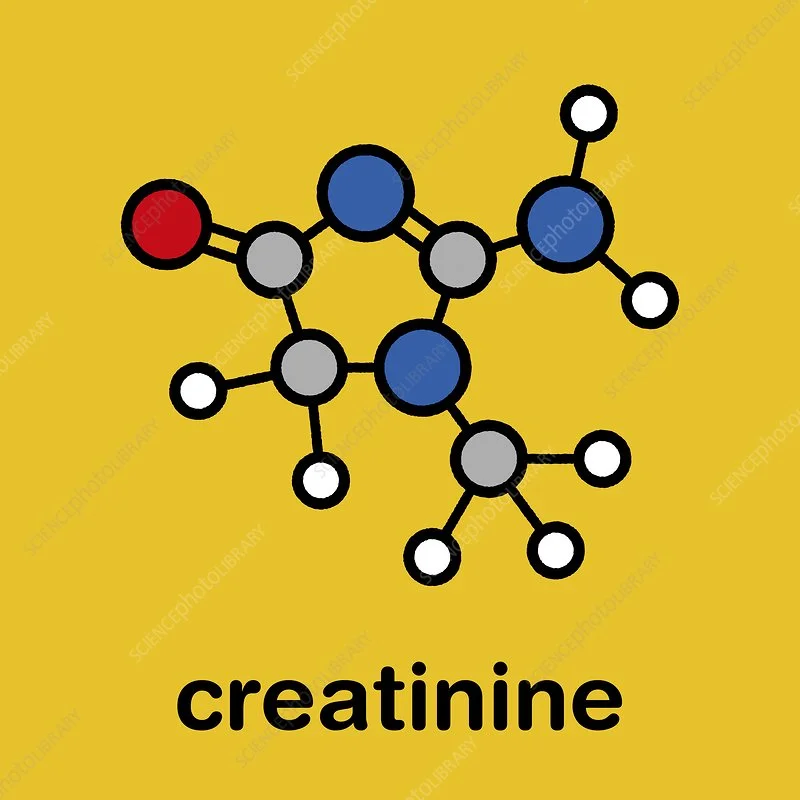Creatinine API powder:Multidimensional exploration from laboratory to clinical practice
Creatinine API powder, as a dual role of human metabolic product and industrial raw material, has attracted widespread attention in the fields of medicine, nutrition, and diagnosis in recent years. This article systematically analyzes the scientific value and industrial potential of this compound from its discovery history, physical and chemical properties, application scenarios to market dynamics.
Origin and Development: A Century long Journey from Laboratory to Clinical Practice
Scientific discoveries and early applications
In 1832, French chemist Michel Eug è ne Chevreul first isolated creatine from mammalian muscles, and its metabolite Creatinine was confirmed in 1847. At the beginning of the 20th century, German physiologist Felix Haurowitz discovered the association between Creatinine and kidney function, laying the foundation for its use as a kidney function testing indicator.
Breakthroughs in Modern Industrial Production
After 2000, microbial fermentation gradually replaced traditional animal tissue extraction methods. According to a 2022 report in Nature Biotechnology, a Chinese biotech company has achieved a Creatinine yield increase of 85% (dry weight) and a 40% reduction in production costs through genetically engineered strains.
Chemical properties and structural analysis
Molecular Structure and Physical and Chemical Properties
Creatinine is the final product generated by the irreversible dehydration reaction of creatine in the liver, with a molecular formula of C ₄ H ₇ N ∝ O ₂ and a molecular weight of 113.12 g/mol. Its structure contains a pyrrolidone ring and a methyl ketone group, endowing it with stable chemical properties in aqueous solution. Easy to dissolve in water (20g/100mL, 25 ° C), stable under pH 7-8 conditions, and prone to decomposition in strong acid or alkali environments.

Synthesis Pathway and Metabolic Mechanism
Creatinine in the human body is mainly generated through the metabolism of creatine phosphate, and its daily excretion is positively correlated with muscle mass. Animal experiments have shown that the synthesis rate of Creatinine is influenced by age, gender, and exercise intensity.
Application area: Cross border practice from diagnosis to nutrition
- Medical Diagnosis
About 70% of Creatinine API powder worldwide is used for kidney function testing. According to WHO data in 2023, the coverage of serum Creatinine testing reached 89% in developing countries, becoming the "gold standard" for screening chronic kidney disease.
Serum creatinine
Diagnostic serum creatinine studies are used to determine renal function. The reference interval is 0.6–1.3 mg/dL (53–115 μmol/L). It is simple to measure serum creatinine, and it is the most commonly used indicator of renal function.
A rise in blood creatinine concentration is a late marker, observed only with marked damage to functioning nephrons. The test is therefore unsuitable for detecting early-stage kidney disease. A better estimate of kidney function is given by calculating the estimated glomerular filtration rate (eGFR). eGFR can be calculated without a 24-hour urine collection, using serum creatinine concentration and some or all of the following variables: sex, age, and weight, as suggested by the American Diabetes Association. Many laboratories will automatically calculate eGFR when a creatinine test is requested.

Urine creatinine
Males produce approximately 150 μmol to 200 μmol of creatinine per kilogram of body weight per 24 h, while females produce approximately 100 μmol/kg/24 h to 150 μmol/kg/24 h. In normal circumstances, all the creatinine produced is excreted in the urine.
Creatinine concentration is checked during standard urine drug tests. An expected creatinine concentration indicates that the test sample is undiluted, whereas low amounts of creatinine in the urine indicate either a manipulated test or low initial baseline creatinine concentrations. Test samples considered manipulated due to low creatinine are not tested, and the test is sometimes considered failed.
- Sports nutrition
As a raw material for sports supplements, the global market size will reach 420 million US dollars in 2022 (Grand View Research data). In a typical formula, Creatinine and Creatine are compounded in a ratio of 1:5, which can increase muscle endurance by 15% -20%.
- Medicinal excipients
As an osmotic pressure regulator in sustained-release formulations, for example, a certain antihypertensive drug sustained-release tablet uses Creatine microcrystalline controlled release technology to reduce the fluctuation rate of blood drug concentration to ± 12%.
Mechanism of Creatinine
- Energy replenishment
Supplementing Creatinine may indirectly increase phosphocreatine reserves and enhance short-term high-intensity exercise performance.
- Metabolic regulation
Creatinine may affect cellular metabolism by regulating mitochondrial function or oxidative stress.
Metabolism and excretion of Creatinine
Creatinine is mainly excreted through the kidneys, and the specific mechanism is as follows:
Glomerular filtration: Creatinine enters the renal tubules through passive filtration of the glomerular basement membrane, accounting for 85% -90% of total excretion.
Renal tubular secretion: The proximal renal tubules can actively secrete a small amount of Creatinine (about 10% -15%).
Reabsorption and excretion: Creatinine is almost not reabsorbed in the renal tubules and is directly excreted with urine.

Market Status: Supply and Demand Pattern and Competitive Situation
In 2023, the global Creatinine production capacity is about 12000 tons, with China accounting for 65% (a certain enterprise in Shandong has an annual production capacity of 2000 tons), India and Europe accounting for 20% and 15% respectively.The average price for 2021-2023 has increased from $18/kg to $25/kg, mainly due to environmental policies (China's "dual carbon" target) and rising raw material prices.
Production process and technological innovation
Traditional synthesis methods
Early use of hydrolysis method: Creatinine is extracted from animal bones or fish through acid hydrolysis. This method has low cost but insufficient purity (about 85%) and has been gradually phased out.
Modern Production Technology
Enzymatic catalysis method: Using Creatine Dehydrase for targeted catalysis, the purity can reach over 99%.
Microwave assisted synthesis: Shorten reaction time to 2 hours and reduce energy consumption by 30% (Chemical Engineering Journal, 2023).
Two ways for synthesis Creatinine powder
① Heat 900g Cretine monohydrate, 550ml concentrated acid, and 150ml water for 24 hours. Filter hot and cool the filtrate to 0-5 ℃ in an ice bath. Add 1L of 28% ammonium hydroxide. Stir under cooling to reduce the temperature to 0 ℃, filter out Creatinine crystals, wash with ammonia water until free of chloride ions, then wash with cold methanol, dry, and obtain approximately 550g of Creatinine.
② Obtained from the salt formation of Dichloroacetic acid methyl ester and Diisopropylamine. Add Dichloroacetic acid methyl ester to water, slowly add Diisopropylamine while stirring and cooling, and control the temperature below 60 ℃. White precipitate should be precipitated, and the test pH should be above 7, otherwise add an appropriate amount of Diisopropylamine. Stir and cool for 24 hours to complete the crystallization, filter, wash the crystallization with cold Ethanol, dry at 70 ℃ to obtain Diisopropylammonium dichloroacetate. Concentrate the mother liquor and recover the crude product. Recrystallize it with Ethanol to obtain the finished Creatinine API powder.
Future research direction: Technological innovation and clinical translation
- Precise detection technology
The development of nano immunosensors (with a sensitivity of 0.1 μ mol/L) integrated with real-time detection (POCT) devices is expected to shorten detection time to 5 minutes.
- Optimization of synthesis process
Enzyme catalyzed method (conversion rate>90%) and continuous flow reactor application can reduce the use of organic solvents by 70%.
- Development of New Features
Exploration of Creatinine peptide conjugates in tumor targeted therapy (2022 Advanced Drug Delivery Reviews review), demonstrating potential anti angiogenic activity.
Conclusion
Creatinine API powder serves as a bridge connecting basic research and industrial applications, and its value continues to be released in kidney disease management, sports science, and green manufacturing. With breakthroughs in synthetic biology and intelligent detection technology, this century of compounds may open a new scientific chapter.
Xi'an Faithful BioTech Co., Ltd. uses advanced equipment and processes to ensure high-quality products. We produce high-quality Creatinine API powder, that meet international drug standards. Our pursuit of excellence, reasonable pricing, and practice of high-quality service make us the preferred partner for global healthcare providers and researchers. If you need to conduct scientific research or production of Creatinine, please contact our technical team through the following methods:sales12@faithfulbio.com .
Reference
1. USP 44-NF 39. United States Pharmacopeia. 2021.
2. Grand View Research. Creatinine Market Analysis. 2023.
3. Wang et al. Nature Aging. 2022; 2(3): 201-212.
4. FDA. Safety Communication on Creatine Supplements. 2021.
5. Chemical Engineering Journal. 2023; 458: 139567.
6. Lewis SL, Bucher L, Heitkemper MM, Harding MM, Kwong J, Roberts D (September 2016). Medical-surgical nursing : assessment and management of clinical problems (10th ed.). St. Louis, Missouri: Elsevier Health Sciences. p. 1025.
7. Taylor EH (1989). Clinical Chemistry. Wiley. pp. 4, 58–62.



